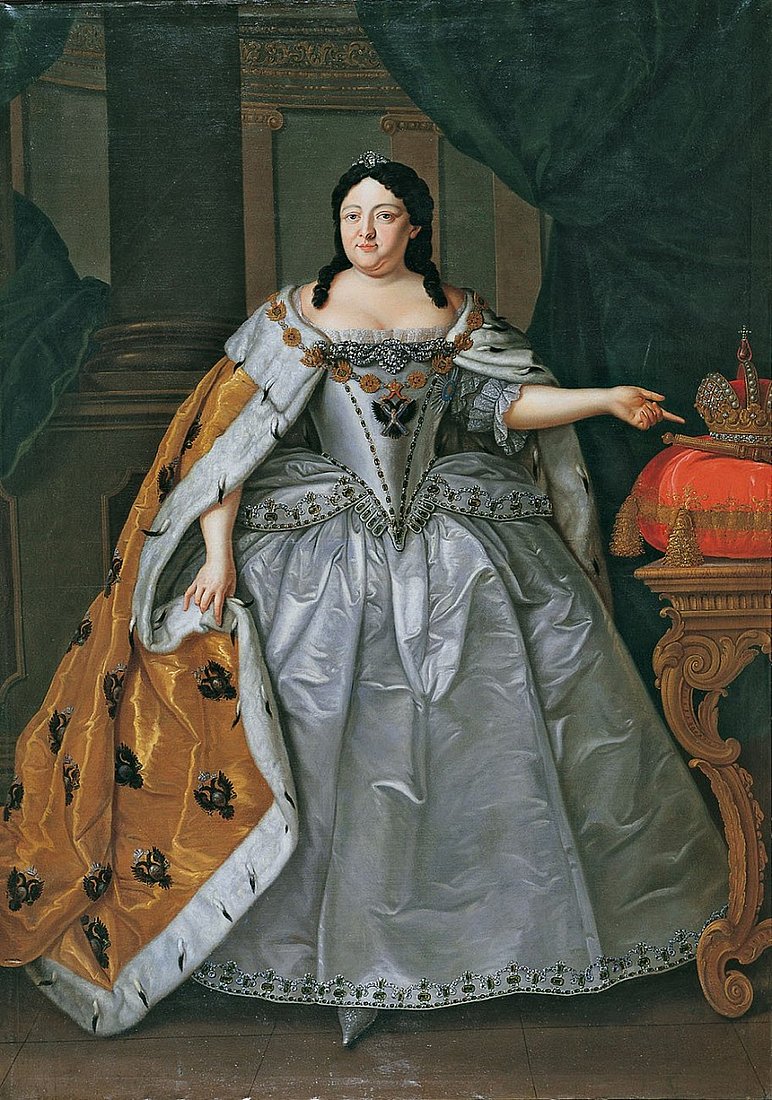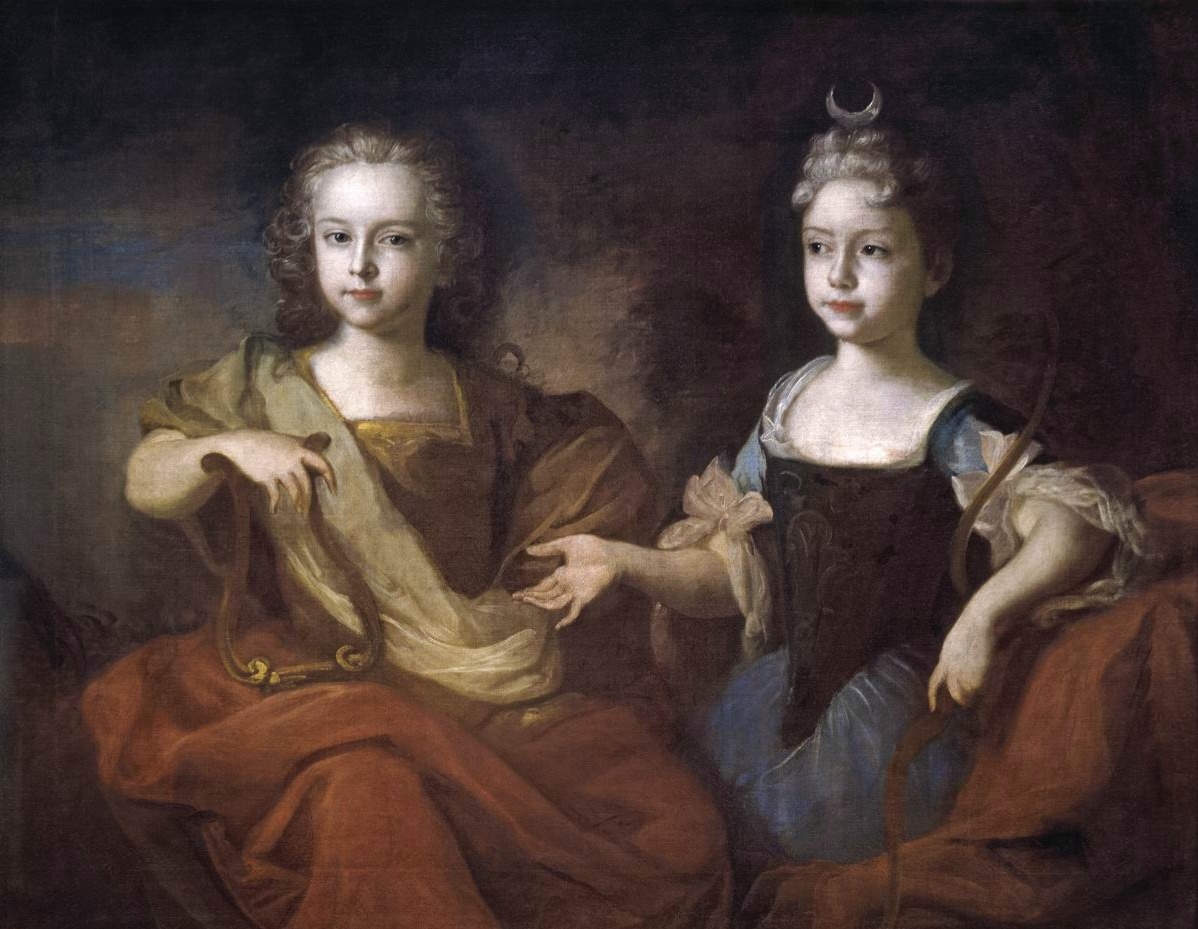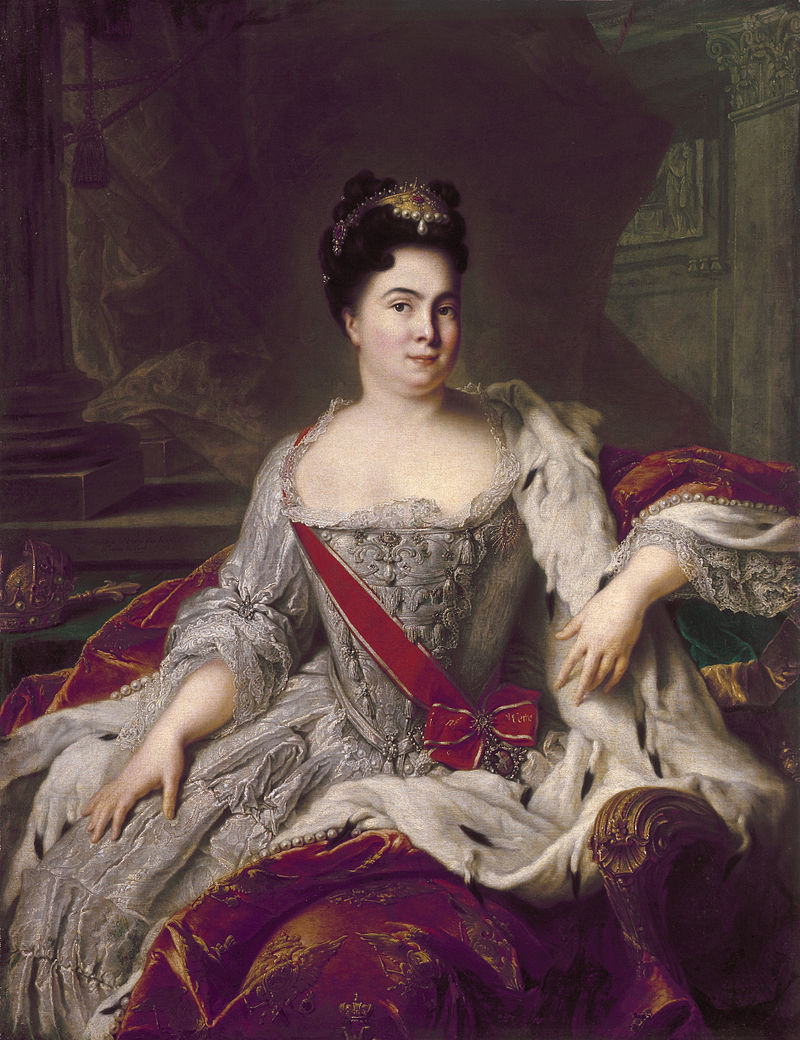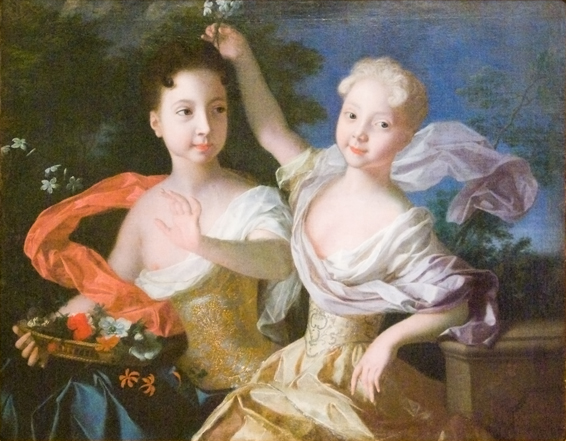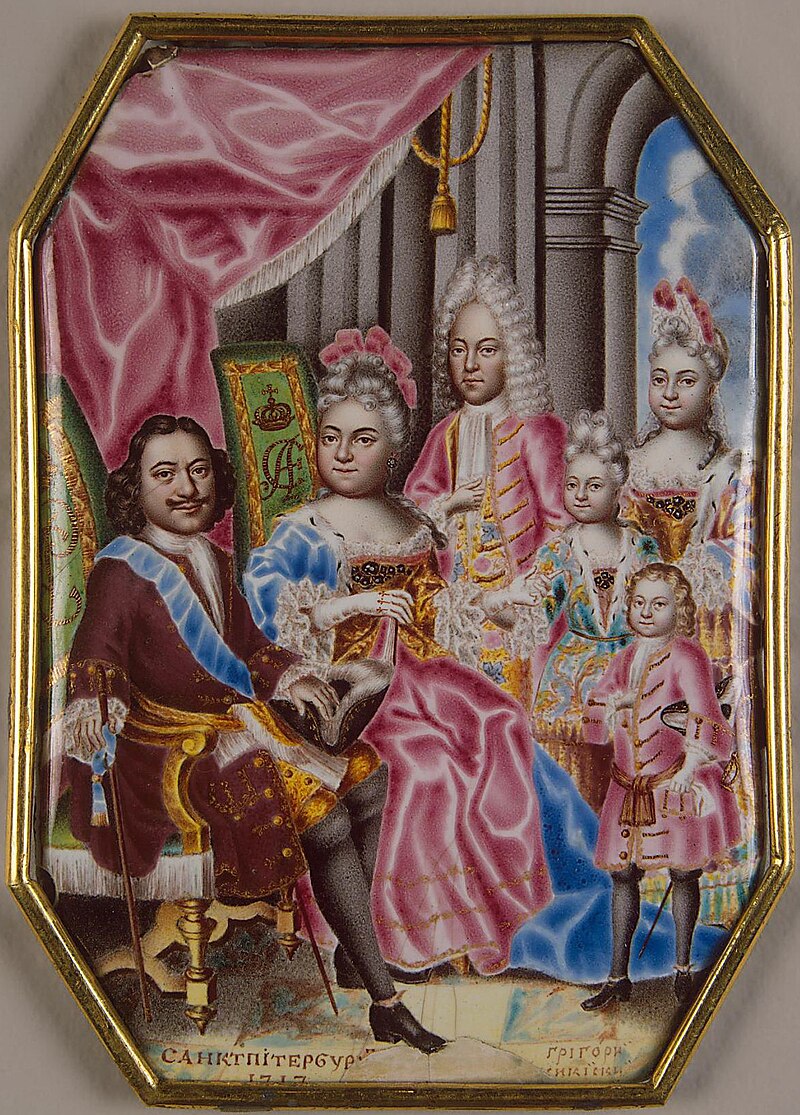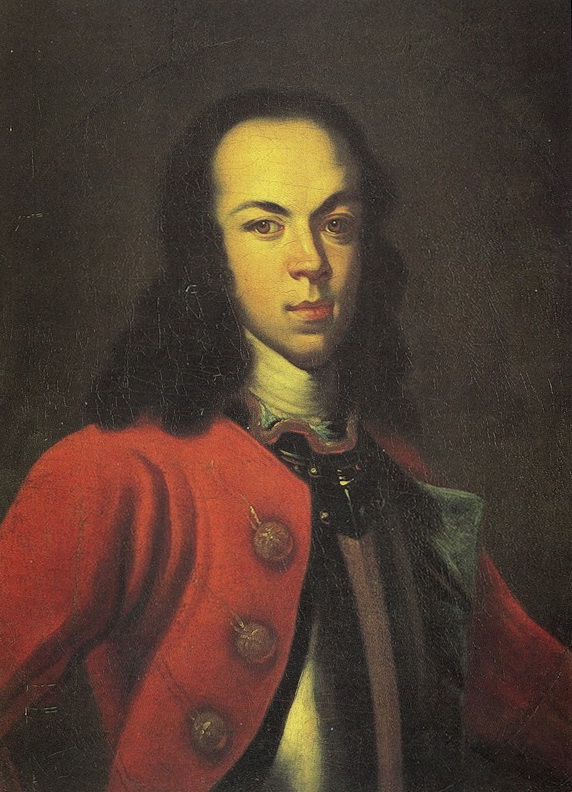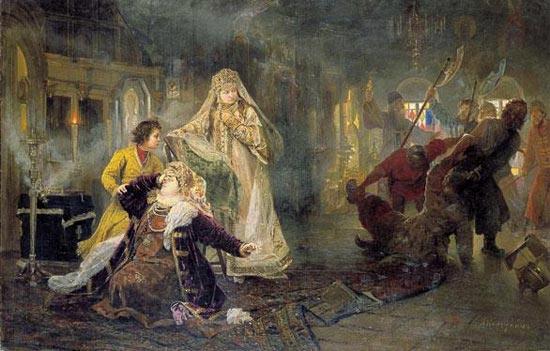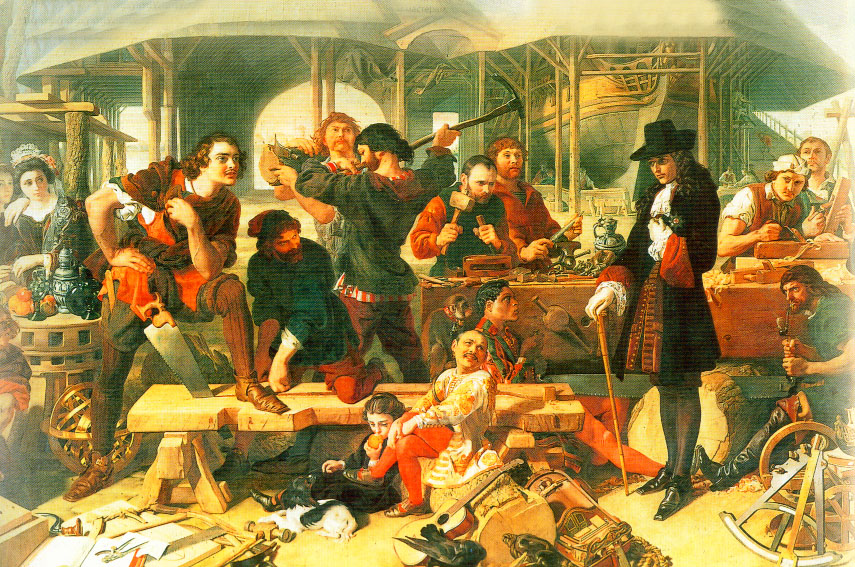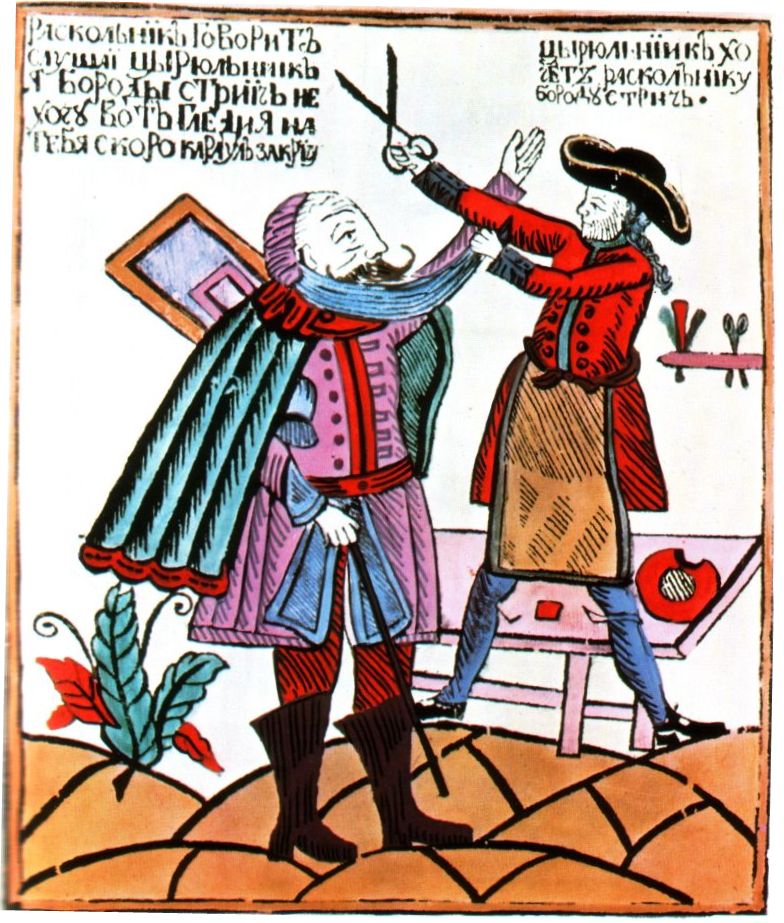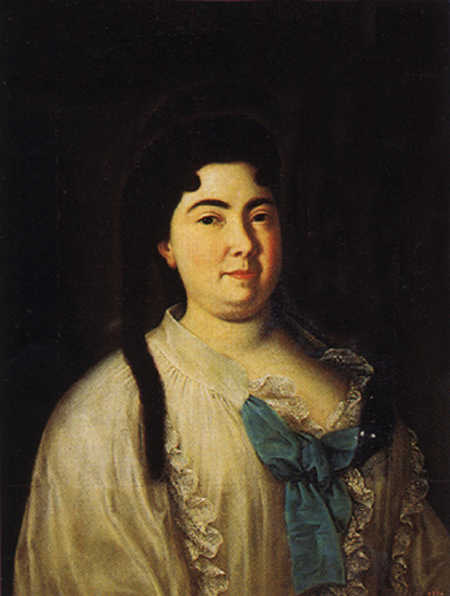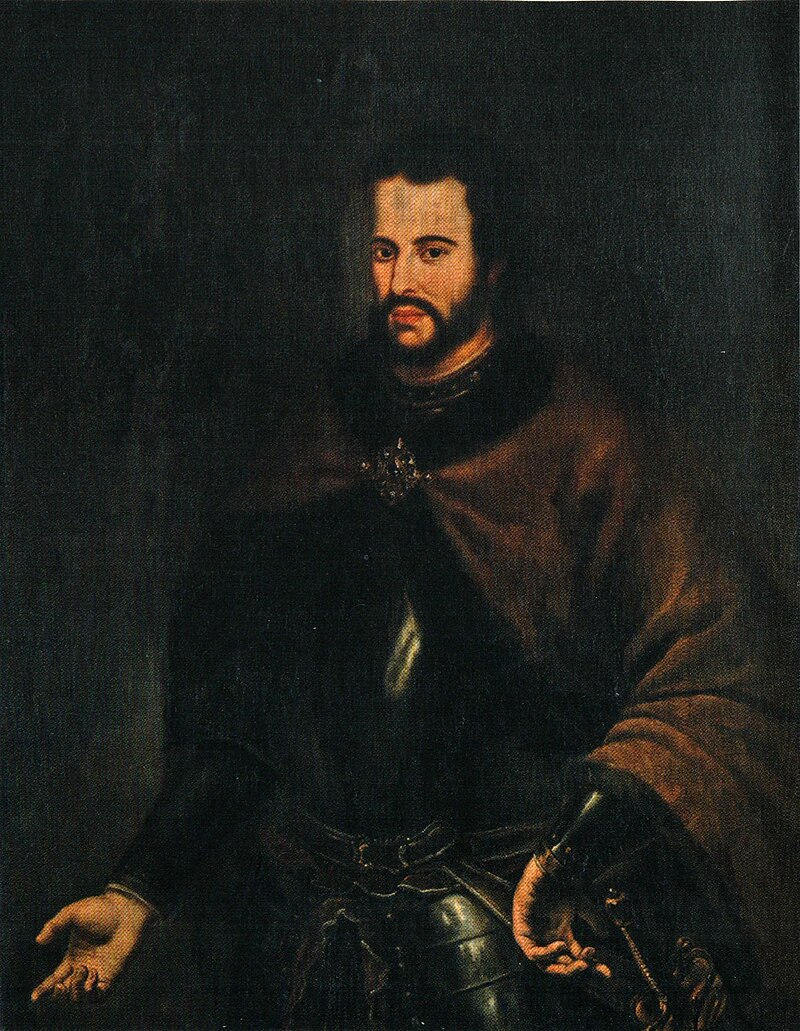by Susan Flantzer © Unofficial Royalty 2018

Ivan VI, Emperor of All Russia; Credit – Wikipedia
The story of Ivan VI and his family is one of the most tragic stories in royal history. Ivan VI, Emperor of All Russia (Ivan Antonovich) succeeded to the throne at the age of two months. A little more than a year later, Ivan was deposed and spent the next 23 years imprisoned before being murdered during the reign of Catherine II (the Great). His parents spent the rest of their lives imprisoned and except for his sister Catherine, all his other siblings were born while their parents were imprisoned. His siblings remained imprisoned until 1780.
Ivan had four younger siblings.
- Catherine Antonovna of Brunswick-Lüneburg (1741–1807)
- Elizabeth Antonovna of Brunswick -Lüneburg (1743–1782)
- Peter Antonovich of Brunswick-Lüneburg (1745–1798)
- Alexei Antonovich of Brunswick-Lüneburg (1746–1787)

Silhouettes of Ivan’s siblings, done after their release from imprisonment; Credit – Wikipedia
Ivan was the oldest of the five children of Elisabeth of Mecklenburg-Schwerin and Anton Ulrich of Brunswick-Lüneburg. Elisabeth was the daughter of Ekaterina Ivanovna of Russia and Karl Leopold, Duke of Mecklenburg-Schwerin. Ekaterina Ivanovna was the eldest of the three surviving daughters of the five daughters of Ivan V, Tsar of All Russia and Praskovia Feodorovna Saltykova. Ekaterina’s father Ivan V was co-ruler of Russia with his younger half-brother Peter I (the Great) until Ivan V died in 1696. However, Ivan V had serious physical and mental disabilities, possibly caused by Down’s Syndrome or a consequence of a disease. He was unable to participate in ruling Russia so Peter ruled alone. Upon Ivan’s death, there was no question about the succession because all his children were daughters. Peter I (the Great) became the sole Tsar of All Russia and in 1721, Emperor of All Russia.
When Ekaterina’s uncle Peter the Great died in 1725, Peter’s second wife succeeded to the throne as Catherine I, Empress of All Russia. However, she died two years later and was succeeded by Peter the Great’s 11-year-old grandson, the only remaining male Romanov, as Peter II, Emperor of All Russia. In 1730, 14-year-old Peter II died of smallpox. With Peter II’s death, the direct male line of the Romanov dynasty ended. He had left no descendants and had not named an heir.
There were five possible candidates for the throne, four adult females and one two-year-old male: the three surviving daughters of Peter the Great’s half-brother Ivan V who were all in their 30s: Ekaterina Ivanovna, Anna Ivanovna, and Praskovia Ivanovna, and the only surviving child of Peter the Great and Catherine I: 20-year-old Elizabeth Petrovna (the future Elizabeth, Empress of All Russia), and lastly, Peter the Great’s grandson: two-year-old Karl Peter Ulrich of Holstein-Gottorp (the future Peter III, Emperor of All Russia), the only child of Peter’s daughter Anna Petrovna, who died due to childbirth complications, and her husband Karl Friedrich, Duke of Holstein-Gottorp. The Supreme Privy Council selected Ivan V’s daughter Anna Ivanovna to be the new Empress of All Russia.
Empress Anna had married when she was a teenager but her husband died two months after the wedding and Anna never remarried. Because her marriage was unhappy, Anna’s sister Ekaterina Ivanovna and her daughter Elisabeth returned to Russia in 1722. In 1732, Empress Anna Ivanovna announced that the throne would be inherited in the male line of her niece, born Elisabeth of Mecklenburg-Schwerin, the daughter of Anna’s sister Ekaterina Ivanovna and Karl Leopold, Duke of Mecklenburg-Schwerin. This was an attempt to secure the future of the Russian throne for the descendants of Ivan V, Tsar of All Russia instead of the descendants of his half-brother Peter I (the Great), Emperor of All Russia.
In 1733, Elisabeth of Mecklenburg-Schwerin converted to Russian Orthodoxy and was given the name Anna Leopoldovna and the title Grand Duchess. Six years later, Anna Leopoldovna married Anton Ulrich of Brunswick-Wolfenbüttel, son of Ferdinand Albrecht II, Duke of Brunswick-Wolfenbüttel. Anton had lived in Russia since 1733 so the couple could get to know each other. On August 23, 1740, Anna Leopoldovna gave birth to a son, Ivan Antonovich. Empress Anna adopted the infant Ivan Antonovich on October 5, 1740, and proclaimed him heir to the Russian throne. Twenty-three days after proclaiming the infant Ivan Antonovich her heir, Anna I, Empress of All Russia died at the age of 48, and two-month-old Ivan Antonovich was Ivan VI, Emperor of All Russia.

Ivan’s father, Anton Ulrich of Brunswick-Wolfenbüttel; Credit – Wikipedia
Before Empress Anna died, she had agreed that her longtime lover and advisor Ernst Johann von Biron would serve as regent until Ivan came of age. The Russian nobility had enough of Biron during Empress Anna’s reign. Biron was regent for three weeks and on November 19, 1740, he was seized and banished to Siberia. Ivan’s mother Grand Duchess Anna Leopoldovna was named regent. Little Ivan was never crowned.

Ivan’s mother, Grand Duchess Anna Leopoldovna in 1740; Credit – Wikipedia
22-year-old Anna Leopoldovna was not qualified to be the regent. She did as little as possible concerning state affairs and argued with her advisers. A conspiracy soon arose intending to obtain the Russian throne for Elizabeth Petrovna, the only surviving child of Peter the Great. A coup occurred during the night of December 5-6, 1741 with financial support from France and military support from the Preobrazhensky Regiment. Elizabeth Petrovna arrived at the regiment’s headquarters wearing armor over her dress asking, “Who do you want to serve, me, your natural sovereign, or those who have stolen my inheritance?” The Preobrazhensky Regiment marched to the Winter Palace and arrested the infant Emperor Ivan and his parents. It was a daring coup and succeeded without bloodshed. The new 32-year-old Empress of All Russia, Elizabeth Petrovna, vowed that she would not sign a single death sentence, a promise she kept throughout her 20-year reign.

The Preobrazhensky Regiment soldiers proclaim Elizabeth the Empress of Russia; Credit – Wikipedia
Now that she had the throne, Elizabeth had a problem. A living Emperor, great-grandson of her father’s half-brother Ivan V, and his mother, granddaughter of Ivan V, remained in St. Petersburg. They were both threats to her throne. Even though 15-month-old Ivan did not know he had been Emperor, his image was on coins used throughout Russia and prayers had been said for him in all Russian churches. Elizabeth originally planned to send Ivan, his mother Anna Leopoldovna, his father Anton Ulrich, and his sister Catherine Antonovna somewhere in Europe so she sent them to Riga (now in Latvia) as the first stage of their journey. However, once the family arrived in Riga, Elizabeth had second thoughts – perhaps it would be a better idea to keep her young, dangerous prisoner under guard in Russia. Ivan was separated forever from his parents and his sister and classified as a secret state prisoner.
Ivan was first sent to Kholmogory, where, seeing no one other than his jailer, he remained for the next twelve years. Eventually, news of Ivan’s whereabouts began to be known. He was then secretly transferred to the Fortress of Shlisselburg where he was under heavy guard and not even the commandant of the fortress knew his true identity. Although instructions had been given not to educate him, Ivan had been taught his letters and could read his Bible. He also seemed aware of his former imperial status and always called himself Gosudar (Sovereign).

Fortress of Shlisselburg; Photo Credit – Wikipedia
Empress Elizabeth died in 1762 and her nephew succeeded her as Peter III, Emperor of All Russia. Ivan’s situation improved a bit and Peter III even visited him. However, Peter III’s reign lasted only six months. He was deposed by his wife, born Princess Sophie of Anhalt-Zerbst, who reigned as Catherine II (the Great), Empress of All Russia.

Peter III visits Ivan Antonovich at the Fortress of Shlisselburg; Credit – Wikipedia
Catherine II ordered Ivan to be placed in manacles and further ordered that if any attempt were made to free the prisoner, he was to be put to death immediately. Ivan’s presence at the Fortress of Shlisselburg could not remain concealed forever. In 1764, Vasily Mirovich, one of the men guarding Ivan, learned his identity and formulated a plan for freeing and proclaiming him Emperor. At midnight on July 16, 1764, Mirovich and his supporters attempted to free Ivan. However, another guard immediately murdered Ivan, following Catherine II’s orders. Mirovich and his supporters were executed. Ivan VI’s burial place is unknown but it is commonly believed that he was buried in the Fortress of Shlisselburg.

Vasily Mirovich Standing over the Corpse of Ivan VI (1884). by Ivan Tvorozhnikov; Credit – Wikipedia
The fate of the rest of Ivan’s family is nearly as grim. His parents were imprisoned for the rest of their lives. Anna Leopoldovna and Anton Ulrich had three additional children while imprisoned, born between 1743 – 1746. On March 18, 1746, Anna Leopoldovna died during childbirth at the age of 27. In 1762, Catherine II offered Anton Ulrich permission to leave Russia with the condition he would leave his children behind but he declined. At the age of 59, Anton Ulrich died in prison on March 19, 1776, after spending 36 years in captivity.
In 1780, Ivan’s four siblings, ranging in age from 34 – 39, were released into the custody of their maternal aunt, born Juliana Maria of Brunswick-Wolfenbüttel but then the Queen Dowager of Denmark. The four siblings had spent their entire lives imprisoned. They lived under house arrest in Horsens in Jutland, Denmark under the guardianship of Juliana Maria and at the expense of Catherine II. Although they were really prisoners, they lived in relative comfort and had a small court of between 40 and 50 people, all Danish except for their Russian Orthodox priest. The siblings were unhappy in Denmark because they were not used to their new freedom and their new environment and were surrounded by people whose language they could not understand.
This article is the intellectual property of Unofficial Royalty and is NOT TO BE COPIED, EDITED, OR POSTED IN ANY FORM ON ANOTHER WEBSITE under any circumstances. It is permissible to use a link that directs to Unofficial Royalty.
Romanov Resources at Unofficial Royalty
- Tsardom of Russia/Russian Empire Index
- Romanov Births, Marriages and Deaths
- Romanov Burial Sites
- Romanov Frequently Asked Questions
- Romanovs Killed During the Russian Revolution
- Romanovs Who Survived the Russian Revolution
- Russian Titles and Patronymics
Works Cited
- En.wikipedia.org. (2017). Anna Leopoldovna. [online] Available at: https://en.wikipedia.org/wiki/Grand_Duchess_Anna_Leopoldovna_of_Russia [Accessed 28 Dec. 2017].
- En.wikipedia.org. (2017). Ivan VI of Russia. [online] Available at: https://en.wikipedia.org/wiki/Ivan_VI_of_Russia [Accessed 28 Dec. 2017].
- Lincoln, W. Bruce. (1981). The Romanovs: Autocrats of All the Russias. New York, NY.: Doubleday
- Massie, R. (2016). Catherine the Great. London: Head of Zeus.
- Ru.wikipedia.org. (2017). Иван VI. [online] Available at: https://ru.wikipedia.org/wiki/%D0%98%D0%B2%D0%B0%D0%BD_VI [Accessed 28 Dec. 2017].





